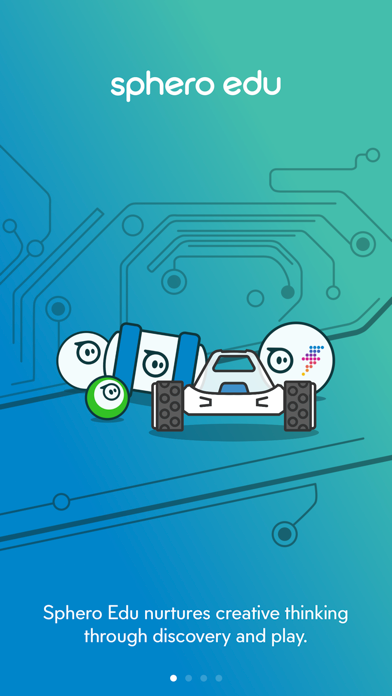
Google uses cookies and data to:


- Deliver and maintain services, like tracking outages and protecting against spam, fraud, and abuse
- Measure audience engagement and site statistics to understand how our services are used
Sphero Edu Welcome to your hub to create, contribute, and learn with Sphero robots. Sphero Edu is your hub to create, contribute, and learn with Sphero robots. This youtube channel houses all of the activity videos from edu.sphero.com, as well as the program videos uploaded. We launched Sphero Edu as an app-enabled educational programme and delivered the first visual programming language for a mobile device – creating a student/teacher social learning platform making the basics of programming easy to learn.
- Improve the quality of our services and develop new ones
- Deliver and measure the effectiveness of ads
- Show personalized content, depending on your settings
- Show personalized or generic ads, depending on your settings, on Google and across the web
Click “Customize” to review options, including controls to reject the use of cookies for personalization and information about browser-level controls to reject some or all cookies for other uses. You can also visit g.co/privacytools anytime.

Control sounds and words which can play from your programming device's speaker or the robot (R2-D2 only).
Sound
await Sound.Category.SoundName.play(true) plays a sound from your programming device. When a sound is played, if you use the true boolean (aka: 'Wait' in the block canvas) the program waits until the sound plays completely before continuing to the next command. Change to false (aka: 'Continue' in the block canvas) to go to the next command immediately. If you want to use timing different than the wait/continue commands allow, you can follow a true (continue) command with a delay() command so the subsequent logic is delayed for the given duration.

You can randomize all sounds by not declaring a Category and SoundName, such as await Sound.play(true). If you declare a Category but leave the SoundName blank it will randomize in the given category, such as await Sound.Animal.play(true) as used in the Animal Toss Game.
Preview all of sounds below, or you can hear them in the blocks canvas in the app:
Sphero Edu Icon

Sphero Edu
Droid Sound
Sphero Edu Best Codes
Unique Star Wars Droid Sounds are available for BB-8, BB-9E and R2-D2 using DroidName.Sound.Category.SoundName.play(). The droid names are written as BB8, BB9E, and R2D2 and they can only be played on the intended Droid. This works the same as the sound command, except that the wait and continue boolean is not available. For example, to play the R2-D2 Burnout sound use R2D2.Sound.General.Burnout.play().
*R2-Q5 Droid Sounds are not available
Speak
await speak() will speak a string from your programming device using the text-to-speech engine, in any language supported by your device. You can add a lot of interesting logic to your programs with this command. For example, in the Magic 8-Ball program you can change the speak command to some fun answers like await speak('Hello World', true). You can also concatenate string values (see the + button on the block canvas) to make them dynamic. The additional values can be variables, parameters, or sensors, and/or in the form of numbers, strings, booleans, or colors. The wait/continue playback (true/false boolean) is handled the same as the Play Sound command. For example, to speak the current heading use await speak(buildString('The heading is' + Math.round(getHeading())), true). **
